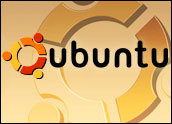
Can you use a reliable, free operating system that can run on new or older computers? How about an operating system that comes packed with hundreds of software programs? Do you want to try out a fully functional OS that runs in a live CD session and can coexist with Windows or Mac operating systems on a dual-boot hard drive installation?
The Linux operating system exists in dozens of individually tailored versions known as “distributions.” Each one is based on open source standards and is the product of a sponsoring community of developers who target a specific type of user — enterprise, educational or commercial.
Platform of Choice
The stable and easy to install Ubuntu distribution is fast becoming the Linux platform of choice. You can run Linux on any computer using Ubuntu’s Live CD feature, and save your files and settings to a USB flash drive for instant access — giving a new meaning to “portable computing.”
Having been raised on DOS and the early generations of Windows, I rediscovered that sense of excitement in a pure computing experience when I first tried other Linux versions over the years. However, they required a steep learning curve and caused too much frustration with setup and obscure command-line options.
Not so with Ubuntu Linux. Within minutes of installing it, I was surfing the Web, writing, and working with graphics and audio programs.
The developers of Ubuntu version 6.06 have created an easy-to-use alternative to Windows.
As Linux requires password access and employs a rigid set of rules to safeguard against unauthorized installations, it does not need anti-spyware or antivirus programs. On all counts, Ubuntu Linux is an ideal replacement OS for home and small business computing.
What Is It?
Ubuntu, which is an ancient African word meaning “humanity to others,” comes with both five-year forum and commercial support via user forums. Developers issue new releases every six months and provide automatic, secure updates.
It supportsIntel x86, AMD64-bit, and Power PC (Apple iBook, Powerbook, G4 and G5) and OpenPower (Power5) architectures. It also supports Sun UltraSPARC and T1 (Sun Fire T1000 and T2000) architectures.
The operating system has no user restrictions and does not require a subscription. It is sponsored commercially byCanonical, which is headquartered in the UK.
At the Linux New Media Awards presented during November’s LinuxWorld Expo in Cologne, Germany, Ubuntu was cited as being the most user-friendly Linux distribution, and Canonical was named as providing the best combination of community and commerce.
What It Has
All Linux distributions come bundled with free programs called “packages.” These are not shareware products or dumbed-down versions of standard offerings, and they do not require registration as is typical for Windows programs.
Linux packages are fully functional applications created and updated regularly by Linux community developers. The standard Ubuntu installation contains literally dozens of programs in a variety of categories, including accessories, games, graphics, Internet, sound and video, programming and system tools. You view all of the program listings, called “catalogs,” through the Add/Remove module in the drop-down Applications menu.
Compatibility Plus
The Ubuntu distribution includes the OpenOffice 2.0 office suite for word processing, spreadsheets and business presentations. I had no trouble exchanging my Windows XP-based Microsoft Office documents with those created in OpenOffice. Similarly, I worked seamlessly with graphics files swapped between Linux’s Gimp image editor and several Windows-based editing programs.
Ubuntu also includes a presentation software package called “Impress” and a database program called “Base.” Import and export filters made swapping files painless; it was easy to create and read Acrobat (PDF) files using the Linux PDF program.
Mozilla’s Firefox Web browser is my standard Windows-based surfing tool. The Linux version is a mirror image in both features and functionality, but several other Linux choices are available.
I am still partial to Microsoft Outlook as mye-mail client, which syncs with my PDA. However, Linux’s information-management tool, Evolution, duplicates those tasks easily and can connect to an Exchange or other mail server.
Quick to Install
The Ubuntu operating system can be downloaded as a disc image (or ISO) file, meaning that you have to burn it to a CD or DVD blank as an image transfer. Users can fill out a mail order form online to receive the Ubuntu CD in the mail.
While it is common for newcomers to Windows XP or the Mac OS to be dazed by installing and using the software’s basic features, installing Ubuntu was a snap — the process took less than 20 minutes and did not require any system reboots. It is an ideal Linux distribution for the Linux newbie.
I was a DOS command-line fanatic in the days before the advent of Windows. A few tasks in Linux require entering similar command-line instructions. Though much of Linux is hidden behind the desktop interface, sometimes I open a terminal window on the Linux desktop to copy and paste in order to complete a task.
For me, that is much of the newly rediscovered fun of using computers.




















































